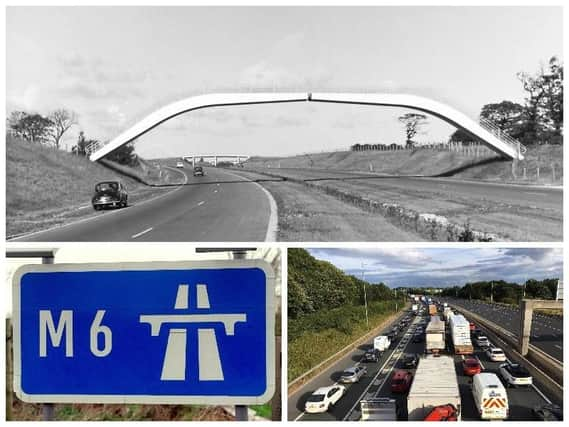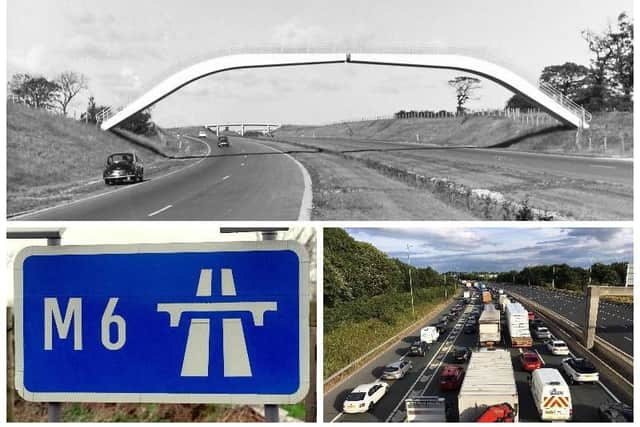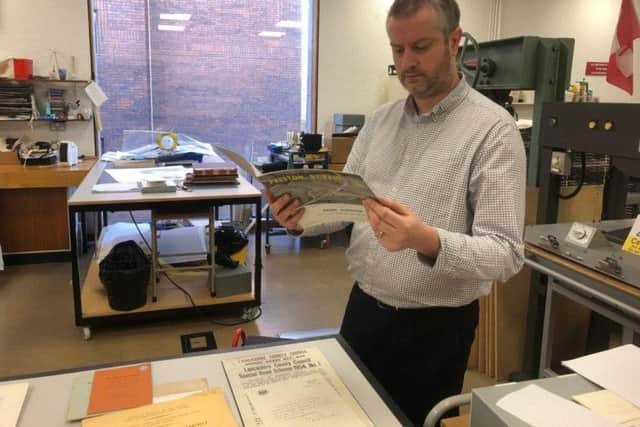The M6 at 60: The road which blazed a trail when it opened in 1958


Britain’s first motorway – the eight-and-a-quarter mile Preston Bypass – could be something of a white knuckle ride for intrepid motorists when it was opened to traffic exactly 60 years ago.
Now, to coincide with the diamond anniversary, Highways England has announced today it will upgrade four sections of what is now the M6 to create 60 miles of “smart” motorway by 2022 – almost science fiction compared to the prototype “super highway” that Prime Minister Harold Macmillan unveiled on December 5, 1958.


Advertisement
Hide AdAdvertisement
Hide Ad“What Lancashire has today, other parts of the country will have tomorrow,” announced the statesman at the opening ceremony at Samlesbury. He then became the first person in Britain to officially travel on a motorway, being chauffeured along the entire length in his Austin Sheerline limousine.
One reporter who drove the stretch from Bamber Bridge to Broughton on that momentous day announced, with a gasp, he had done so at an average speed of 83mph.
Another newspaper urged motorists: “Don’t be frightened - it’s an easy drive with common sense.”


Here, just east of Preston, the eyes of the nation were on a bright new future for Britain’s congested road network.
Advertisement
Hide AdAdvertisement
Hide AdSix decades on the UK now has 2,300 miles of motorways - and more continue to be built.
“It was a truly significant moment for the whole nation,” said James Towe, who is setting up an exhibition of photographs, documents and press cuttings this week at the Lancashire Archives in Preston to mark the road’s 60th birthday.
“Here, at Preston, was the first motorway in Britain. And having Prime Minister Harold Macmillan there to do the honours that day showed how important it was seen to be.
“It was described by the Ministry of Transport as a ‘guinea pig.’ It was the test bed for all the motorways that followed. They took the lessons learned from the Preston Bypass and applied them to other stretches as they were built.
Advertisement
Hide AdAdvertisement
Hide Ad“We take motorways for granted these days. But 60 years ago this piece of road was something extraordinary.”
The original road cost £3m to construct, the equivalent today of £65m. It carved its way through the lush Lancashire countryside, starting to the south of Bamber Bridge, going over the River Ribble at Samlesbury and up to Broughton.
It took traffic around Preston and also helped to ease the journey for hundreds of thousands of motorists heading for the delights of the Fylde Coast - even before the connecting M55 opened in 1975.
Work had begun in the summer of 1956 and took more than two years to complete. It was, boasted the planners, built for speed.
Advertisement
Hide AdAdvertisement
Hide AdNo severe corners, only gentle curves, meant drivers could safely put their foot down and complete the entire length in around 10 minutes, compared to a crawl of up to an hour along the heavily congested A6 through Preston.
“There was no official speed limit at all for the first few years,” said archivist James Towe. “So the only limit was the car you were driving, although a few probably wrecked their engines in the process.
“There were no barriers on the central reservation - it was just a strip of grass to begin with - or at the sides of the motorway.
“Some things didn’t work. They tried planting trees and hedgerows on the central area to reduce dazzle, but they all died. So later they decided to put barriers in.”Initially the Preston Bypass was just two lanes in either direction - the motorway is now four either side.
Advertisement
Hide AdAdvertisement
Hide AdEach bridge - there are 22 along the eight-and-a-quarter mile stretch - was designed differently and painted in different colours to try and make sure drivers did not get bored and nod off.
“There is very little of the original Preston Bypass left following the widening work which has gone on over the years,” added James Towe. “But it does still follow the same line as it did 60 years ago.”